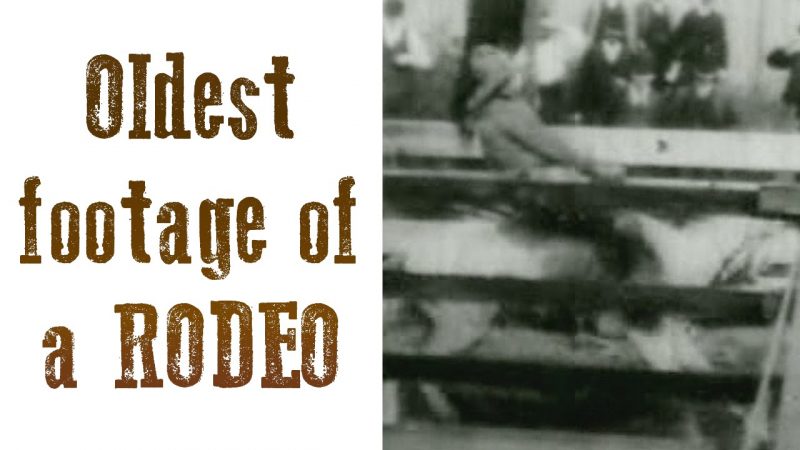The rodeo was not originally a sporting event, but an integral part of cattle-ranching in areas of Spanish influence. The working rodeo was retained in parts of the US Southwest even after the US-Mexico War. In fact, it was important enough to merit legal status in California:
“An Act to Regulate Rodeos (April 3, 1851)…Every owner of a stock farm shall be obliged to give, yearly, one general Rodeo, within the limits of his farm, from the first day of April until the thirty-first day of July, in the counties of San Luis Obispo, Santa Barbara, and San Diego; and in the remaining counties, from the first day of March until the thirty-first day of August…in order that parties interested may meet, for the purpose of separating their respective cattle.
On yestervid, we found this video that shows the oldest surviving footage of a rodeo, filmed on October 16, 1894, it shows Lee Martin, a genuine cowboy, riding a bronc.The second footage is of calf branding in 1898.
Take a look:

Source: yestervid
Rodeo stresses its western folk hero image and its being a genuinely American creation. But in fact it grew out of the practices of Spanish ranchers and their Mexican ranch hands (vaqueros), a mixture of cattle wrangling and bullfighting that dates back to the sixteenth-century conquistadors.
One of the activities introduced by the Spanish and incorporated into the sporting version of rodeo was bull riding. Another was steer wrestling, involved wrestling the steer to the ground by riding up behind it, grabbing its tail, and twisting it to the ground. Bull wrestling had been part of an ancient tradition throughout the ancient Mediterranean world including Spain. The ancient Minoans of Crete practiced bull jumping, bull riding, and bull wrestling. Bull wrestling may have been one of the Olympic sports events of the ancient Greeks.
The events spread throughout the Viceroyalty of New Spain and was found at fairgrounds, racetracks, fiestas, and festivals in nineteenth-century southwestern areas that now comprise the United States. However, unlike the roping, riding, and racing, this contest never attracted a following among Anglo cowboys or audiences.It is however a favorite event included in the charreada, the style of rodeo which originated in the Mexican state of Jalisco.
There would probably be no steer wrestling at all in American rodeo were it not for a black cowboy from Texas named Bill Pickett who devised his own unique method of bulldogging steers. He jumped from his horse to a steer’s back, bit its upper lip, and threw it to the ground by grabbing its horns. He performed at local central Texas fairs and rodeos and was discovered by an agent, who signed him on a tour of the West with his brothers. He received sensational national publicity with his bulldogging exhibition at the 1904 Cheyenne Frontier Days. This brought him a contract with the famous 101 Ranch in Oklahoma and its traveling Wild West exhibitions, where he spent many years performing in the United States and abroad.
